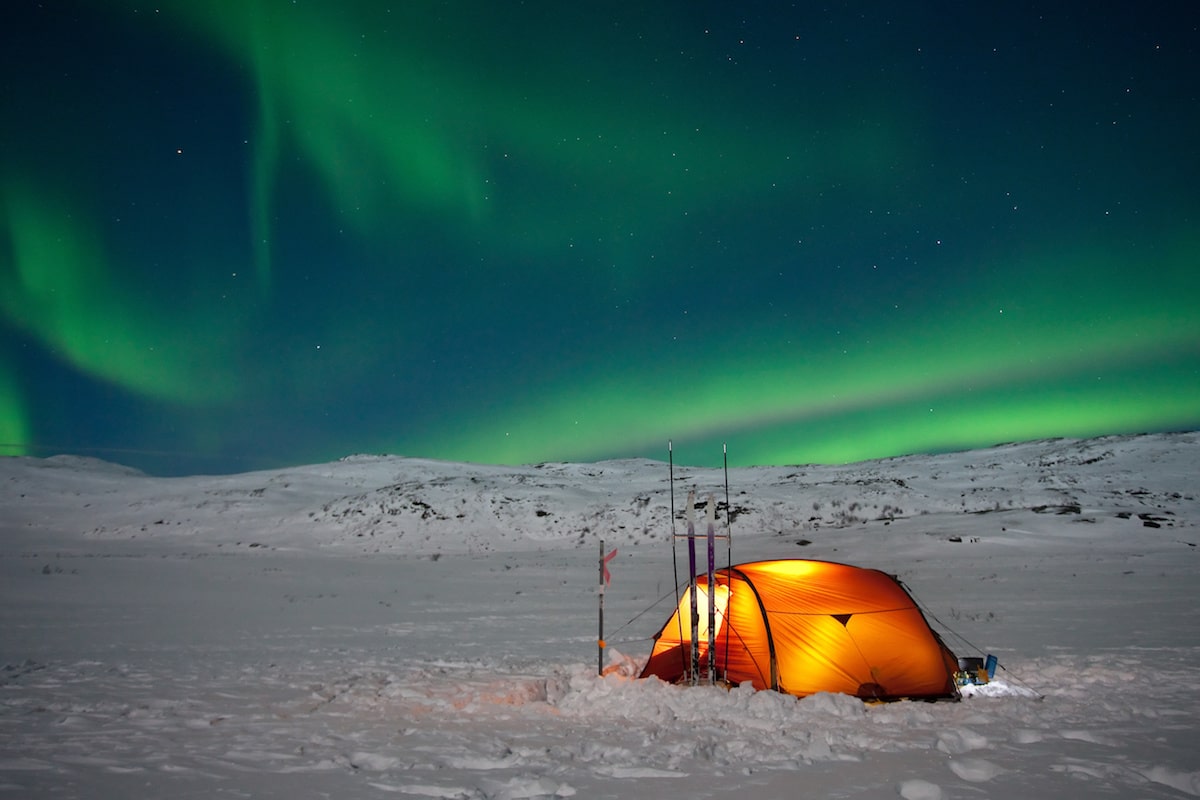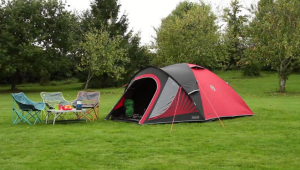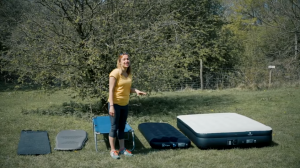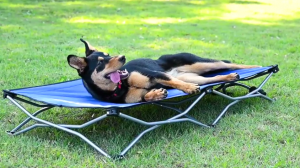Many people think of camping as something that is only done during the summer months. Even so, year-round camping is entirely possible, provided you take extra precautions during the winter. If you don’t know what you’re doing, camping during the winter can be extremely dangerous. However, if you’re familiar with the right ways to prepare and act, camping out in the snow can be a lot of fun. Here is your complete guide to cold weather camping.
What We'll Cover
The Right Gear
If you want to have a successful winter camping trip, you need the right gear to protect you.
Clothing
Clothing for winter camping does not have to be big and bulky. In fact, multiple layers of medium-weight apparel are ideal because they will not restrict your movements. Be sure to include the following items:
Thermal Base Layers
The layer closest to your skin should wick moisture away from your body rather than hold it in. As such, you should avoid cotton or any other absorbent material. Wear clothing made from polyester, nylon, silk or another similar material, and ensure that your clothing fits comfortably but not too loose.
Thermal Socks
Prevent frostbitten toes by wearing two pairs of socks. Ensure that the pair closest to your skin contains a moisture-wicking material, and then add a heavier pair over top. Thermal socks made from a wool or wool blend will provide adequate warmth and protection for your feet.
Snow Pants
Snow pants will keep your lower body dry while also holding in heat. To keep snow from getting into your boots, choose a pair with elastic around the ankles. Full-zip legs will also allow you to remove your pants without having to take your boots off first.
Snow Boots
The American Academy of Dermatology suggests wearing a pair of waterproof boots that will at least cover your ankles. Even so, you could need boots that are up to 12 inches high if you are hiking in deep snow. Taller boots will provide more protection, but are also heavier to walk in. Ensure your boots are designed in such a way that snow cannot easily get inside them.
Gloves
Choose a three-layered winter glove that mimics your clothing layers. The inner layer should wick moisture away, the middle layer must insulate, and the outer can protect you from the elements. Your winter gloves should also fit snugly and allow for as wide a range of motion as possible. Look for longer gloves that extend beyond your wrists and contain elastic bands that will keep snow out.
How to Layer Clothes
To remain warm, dress in three layers. First, put on a base layer made from a wicking material such as polyester to keep moisture away from your skin. Use the middle layer for insulation to keep you warm and an outer layer to block wind and rain. Rather than being tight, the layers should provide a bit of airflow between them.
Tents
Ordinary tents are insufficient for cold weather camping. To stay warm, you need a four-season tent. Four-season tents provide additional protection against high winds, snow, and freezing temperatures, and are also highly durable. Look for a tent with sturdy poles that will help it stand up in high winds and rounded sides that will keep snow from piling up. You’ll also want few mesh panels so that cold air doesn’t get into your tent.
Before setting up your tent, pack down any snow with your feet. Alternatively, you may also dig down a couple of feet to create an area for your tent. The extra snow will help block the wind and insulate you from the cold.
Ordinary tent snakes do not always work well in the snow. You’ll need special snow stakes, which are brightly colored and designed to make it easy to secure a tent placed in snow.
Sleeping Bags and Sleeping Pads
Frost can actually go much deeper than the ground’s surface. As such, you should never place your sleeping bag directly on the ground during winter. Instead, use a waterproof sleeping pad that is at least two to three inches thick to provide you with some insulation. Place an inflatable mattress or sleeping pad over top of this to ensure that you are well off the ground.
For winter camping, the ideal sleeping bag is one rated ten degrees or colder. Down-filled sleeping bags will provide better insulation than synthetic materials, and will retain their fluff longer. Down is also more lightweight than synthetic fibers, yet will keep you every bit as warm or warmer.
Skis and Snowshoes
Accessing the backcountry during winter could require a pair of skis or snowshoes. When it comes to skis, ones with tour bindings will allow you to move more naturally when going uphill or over rolling terrain. A pair of skins can also prove useful when traveling on flat or uphill surfaces.
For snowshoes, choose a pair that fits comfortably over your hiking boots and are easy to put on and carry. Shoes made from a composite material are best for walking on ice or packed snow. Smaller, more compact snowshoes also work best in packed snow, while larger ones are better for powdery snow.
For balance, choose a pair of ski poles with powder baskets. These baskets provide grip and prevent the poles from sinking all the way into the ground. A pair of trekking poles will also work, and might be a better option if you are snowshoeing.
Winter trekking often requires moving around in the dark. A bright headlamp will keep your hands free to hold your ski poles while also making it safe for you to travel.
Cooking in the Cold
It’s more challenging to prepare meals when wearing gloves or your hands are numb. For this reason, you should perform as much prep work as possible ahead of time. Chop vegetables and place them in plastic bags, and use meats or other foods that only need reheating. Some examples are precooked bacon, Spam, canned stew, etc.
Chili, casseroles, and similar dishes can be prepared at home as well. That way, when you get to the campsite you will only have to heat them up.
Washing dishes is also more difficult when it is cold. For this reason, you should choose menu items that are easy to prepare in a single pan. Hobo pack dinners are ideal for cold weather camping because they minimize the amount of cleanup.
Plan Your Calories
When planning your menu, add more fats to your diet to provide you with energy and help you stay warm. Complex carbohydrates such as whole grains and legumes will also give you energy and help you stay full longer.
Eat regular snacks throughout the day so that your digestive system is constantly working and will heat up your body. Some trail mix or fruit will provide you with a bit of sugar for quick energy while you are being highly active.
Avoid eating junk food that is mostly empty calories. Foods such as these can cause your blood sugar to spike suddenly, only to drop just a short time later. When this happens, you are more likely to feel cold.
Block the Wind
Whenever possible, choose a location that offers some natural protection from the wind such as a hillside, rock formation, or grove of trees. Not only will you stay warmer, but you will also have an easier time maintaining the flame on your cook stove.
Use a Lid While Cooking
Use a lid with your camping cooking pot or cast iron skillet to hold in heat and speed up the cooking process. Ideally, you should choose a transparent lid. This will allow you to check your pot for boiling without having to lift the lid and let steam escape. Ensure your lid fits tightly and has a plastic handle that will keep you from getting burned.
Use Plastic or Wooden Utensils
Metal utensils become cold when exposed to the outside winter air. As a result, they may lower the temperature of your food, making it take longer to cook. Plastic or wooden utensils do not become cold easily, and are therefore a better choice for winter camping.
Bring Extra Fuel
High winds can blow the flame on your camping stove, causing you to use more fuel than usual. You might also use your camping stove in between meals to keep hot beverages such as coffee warm. If you want to conserve fuel, an insulated camping mug can be a good way to keep your drinks hot without resorting to fire. Decide which plan of action you’re going to take regarding fuel and bring more than you normally would.
Extra fuel is especially important if it becomes necessary to melt snow. Melting snow can use up to three times the amount of fuel you would normally use to cook with. You could also need to thaw out any water you do bring, in which case you would also need extra cooking fuel.
Use a Meat Thermometer
Don’t count on your senses to tell you when meat is done. If your lips are cold, meat may feel hot when you taste it even though it hasn’t reached the correct temperature. Use a meat thermometer to tell you when meat has reached a safe temperature for serving.
Stay Hydrated
Your body is approximately 60% water, which you constantly shed through sweating and urination. As such, it is just as important to stay well-hydrated during the winter as it is in summer. Count on drinking about a half-gallon of water per day to keep your body functioning properly and maintain a high level of mental alertness.
Although you must stay hydrated, eating snow is not a substitute for drinking water. Your body temperature must actually increase in order to melt the snow, which could actually lead to further dehydration. Any other sources of water you encounter might also be unsafe, which is why you should always bring plenty of water with you.
Winter Hazards
Winter campers need to be aware of four winter hazards that can lead to frostbite, frostnip, hypothermia, or frozen eyelashes. The four hazards are temperature, wetness, cold metal, and super-cooled liquids such as fuel.
Consider the risk of avalanche anytime you are camping in steep gullies in heavy snow. Use caution when walking across frozen waters by checking the margins of ice to the shoreline. Be mindful of snow cornices, which may overhang ridges or mountain crests.
At your campsite, be aware of “widow makers” or broken branches that are caught high in the treetops. These have the potential to break off and cause serious injury or death. Never set up a tent or field kitchen directly underneath a tree with widow maker branches.
Camp stoves should not be used for heating. You run the risk of carbon monoxide poisoning when using them in enclosed areas. Your appliance might even explode if you fail to follow the manufacturer’s safety recommendations. However, f you have an appropriate tent, a tent stove can be used as a furnace while inside it.
Ice axes and crampons can help you achieve better footing on snow and ice, but also come with a risk of injury. Become familiar with the proper techniques for using them, and always maintain an awareness of your surroundings to prevent others from being stabbed.
Conclusion
Don’t put away your camping gear just because it is getting a little cooler outside. Camping is something you can enjoy just as much during the winter as you do in the summer, so long as you take the right precautions. By following these tips, you can appreciate spending time in the great outdoors regardless of the season.
The responses below are not provided, commissioned, reviewed, approved, or otherwise endorsed by any financial entity or advertiser. It is not the advertiser’s responsibility to ensure all posts and/or questions are answered.


![How to Insulate Your Tent For Winter & Summer Camping [Easy & Safe]](/assets/images/837b3f1e0120197d2432bcf28c7a3636.png)


